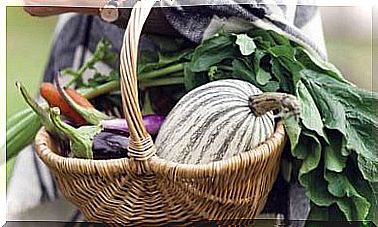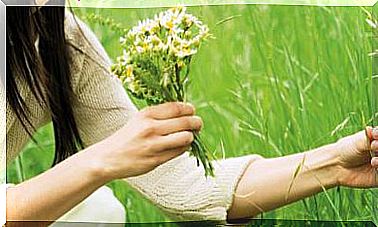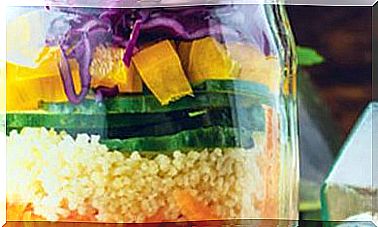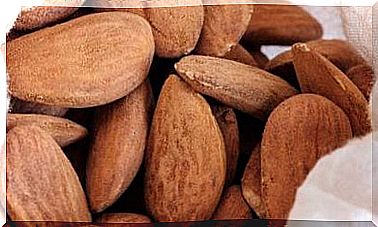Urban Garden In Pots: What To Plant And How To Grow Vegetables
On terraces and balconies in cities you see fewer and more flowers and vegetables: potted gardens proliferate with ecological awareness and interest in feeding.

- Pots and planters to grow at home
- Grow containers and tables
- 3 basic ingredients of an urban garden
- Sun
- Irrigation
- Fertilizers
- Take advantage of the space in an urban garden
- Aromatic plants on the balcony
Vegetables require similar care to decorative plants but, in addition to being beautiful, they are eaten. That is why urban gardens in pots are proliferating . There are many reasons to start growing your own vegetables at home:
- With the garden, in addition to producing food, we seek to regain contact with nature and experience the satisfaction of harvesting and eating what one has cared for with one’s hands. It allows to have a small amount of fresh food grown without pesticides and fertilized in an ecological way.
- It is an activity available to anyone, you just need an outdoor space where you can put some pots: balconies, terraces, patios and even a window sill can be used. Observing the cycle of life pacifies the spirit, contact with nature relaxes and helps to see problems in their proper measure.
- It is an activity suitable for people of all ages. The garden is a game for children: they love to put their hands in the ground, water the plants, harvest the fruits and, of course, eat them. They learn good eating habits and that fruits and vegetables are not born on the trays of the supermarket but need care to develop. If they are in charge of watering the garden, they will learn to be responsible and will feel proud to collaborate.
What does it take to set up a garden at home? What is better to plant in the pots? How to cultivate for good results? We explain it to you below.
Pots and planters to grow vegetables at home
The pots should be as large as possible, although some vegetables such as lettuce or onions can grow well in small pots as long as they do not lack water.
In general, you should look for containers with a depth of between 20 and 40 cm so that the roots can develop well.
The best results are obtained with large pots or planters since they keep the humidity more constant and the roots heat up less.
The white pots are ideal for the summer as they keep the roots cooler while the black ones, which absorb the heat of the sun, are more suitable for the cold months.
With a little imagination, many containers can be recycled to use as flowerpots: water jugs, old bathtubs, plastic bags from the supermarket … All you need is to make some holes in the bottom to facilitate drainage.
The pots should be filled with fertile soil; usually mixtures of peat or coconut fiber are used with compost such as manure, worm castings or poultry manure. These growing medium mixes are especially suitable for container planting as they are rich in nutrients and have a high water holding capacity, reducing the need for watering and ensuring that the vegetables have all the food they require.
Grow containers and tables
The cultivation tables allow you to sow a wide variety of vegetables in a small space. Even older people or people with mobility problems can work on them.
These tables are filled with a very nutritious mixture of substrates, normally composed of coconut fiber and vermicompost (the humus that worms produce when digesting organic matter and one of the most complete ecological fertilizers).
The three ingredients for a successful urban garden
The secret to achieving rapid growth is that plants do not lack any of the three elements they need: water, light and nutrients.
Sun
It is the basic element, without it there is no growth. In general, the south orientation is preferred because the more hours of sunshine a day the terrace has, the better the plants will grow. The fruits, especially tomatoes and peppers, produce very little if they do not have abundant insolation.
But if the balcony faces north, don’t be discouraged either. Although they grow more slowly, it is also possible to grow vegetables. The vegetables that best survive on terraces with few hours of sun are usually leafy and root vegetables : spinach, celery, cabbage, cauliflower, Brussels sprouts, lettuce, turnip, leek, radish, chard, endive, broad beans, peas, strawberries and many aromatics such as parsley, coriander, mint, basil and oregano.
Irrigation
It is the main care that a garden needs, especially when the plants are grown in pots, where the amount of moisture available is much less than in the ground.
In spring and autumn, unless it rains, the plants need watering every two or three days, while in summer the watering should be daily.
A good idea is to install a drip irrigation system and connect it to the tap using a programmer that turns on the water for a while each day. The plants regularly receive what they need, water is saved and freedom is gained.
Fertilizers
Little soil fits in a pot and, unless we have prepared an extremely nutrient-rich substrate, it will probably be necessary to add some compost during the growing cycle.
The green manure solids, such as manure, guano, compost or humus, are usually mixed with the substrate filling the pots. If more needs to be added during growth, they are simply spread over the soil and the irrigation water takes care of bringing the nutrients to the roots.
The liquid fertilizers are provided dissolved in irrigation water and its effect is faster but shorter.
Healthy and well-fed plants show intense green leaves, but when nutrients are scarce the green color becomes lighter, and can reach, if the deficiency is prolonged, up to yellow.
Keep an eye on the color of the plants and increase the frequency of fertilization if the leaves get too light.
What is better, seeds or seedlings?
Today, with the proliferation of urban gardens, most garden stores sell a stock of vegetables, which avoids having to plant from seed. The seedlings are bought ready to be transplanted and to start growing, which shortens the duration of the process by one or two months.
Even so, there are some vegetables that are still sown from seeds : carrots, radishes, turnips, sunflowers, beets … Of course, if you want to grow some unusual variety you will have to resort to seeds, since the seed sellers they usually only have the most common ones.
What to plant in an urban garden: the easiest vegetables to harvest
- Radishes are harvested just one month after planting. Due to their small size they can be grown together with slow growing vegetables such as carrots or tomatoes as they will be harvested before space is required.
- Lettuces grow fast in good weather and by planting seedlings they are harvested between one and two months later.
- Arugula is another fast-growing plant and its nutty flavor, much more remarkable freshly harvested, adds a different touch to any dish. Spread on a freshly baked pizza it is simply spectacular.
- Carrots are grown from seeds, it is enough to spread them on the damp soil and cover them lightly. They need little compost and take advantage of the nutrients that may remain after having harvested another vegetable.
- Potatoes can be sown in pots, although achieving a good production is not easy, since it is a crop with very high nutrient needs : the substrate should contain at least one third of manure or worm castings. In any case, they are very easy to grow from any potato that has a sprout.
- The tomatoes. Few vegetables are as tasty as a freshly picked ripe tomato. For many gardeners, harvesting tomatoes is their greatest wish. It is not the easiest vegetable to grow and often requires preventive treatments against fungi, especially powdery mildew and mildew.
The most common ecological treatment consists of spraying the plants with cupric sulfate, a natural fungicide based on copper and sulfur that prevents the attack of both species of fungi. Peppers, aubergines, potatoes, and zucchini also benefit from the application of sulfur and copper. - Some climbing vegetables like cucumbers, beans or peas need supports. Tomatoes too, although you have to tie them to the stakes because they do not tangle themselves.
- Zucchini is one of the most appreciated vegetables as long as you have a large pot. When it grows in a fertile and abundant soil, it can grow to a zucchini every two or three days throughout the summer.
- Sunflowers grow easily and kids love roasted pipes.
How to take advantage of the space in a home garden?
The main limitation of urban gardens is usually space, unless there is a large roof terrace. Most people only have a balcony or a small terrace.
It is difficult for a garden on the balcony to cover the weekly needs of vegetables and vegetables, although its products are the star of many dishes. To increase production it is necessary to sharpen ingenuity
To achieve the maximum production of vegetables, it is advisable to make good use of the environment and forgo growing slower-growing vegetables or those that require more space.
While radishes take a month to grow and lettuce, chard, cabbage and peas take about two months, tomatoes, peppers and aubergines need at least three months to start producing. Dried onions require almost five months but those that are eaten fresh are ready after two and a half months.
Share pot
Different vegetables can be grown together on grow tables, planters and large pots to save space, although mixing varieties that compete for the same nutrients should be avoided.
If we classify the vegetables according to the part that is consumed, we would have to combine root, leaf, fruit and flower plants, since they need different nutrients and do not compete too much. What you have to avoid is to plant two vegetables of the same type together.
Replenish
Among slow-growing vegetables such as cabbages, you can plant fast plants such as lettuce or radishes that take advantage of the free spaces while the cabbages are growing.
Every time a plant is harvested, a new one is planted in the hole so that the terrace can provide vegetables continuously.
Two levels
Some plants such as tomatoes, peas, cucumbers, or strawberries can be grown in hanging pots, allowing stems and fruit to hang freely. This system allows to grow a greater number of plants in the same space, some at ground level and others above.
Fill your balcony with aromatic plants
Many aromatic plants need plenty of sun and can handle the summer heat very well even with little watering: sage, lavender, thyme, marjoram, oregano, rosemary.
Others like mint, parsley, basil, coriander and chives will grow better with a little more water and even in semi-shade.
Laurel is a larger shrub and needs a larger pot but lasts for many years and can be pruned to control growth.
To know more…
If you have decided to start your own home garden, these books can help you have better results:
- The garden in pots , by Bob Purnell (Ed. Grijalbo)
- Your garden on the balcony , by Gabriel Herreros and Jabier Vázquez (Ed. Txertoa)
- How to grow vegetables in pots , by Eduard C. Smith (Ed. Omega)









